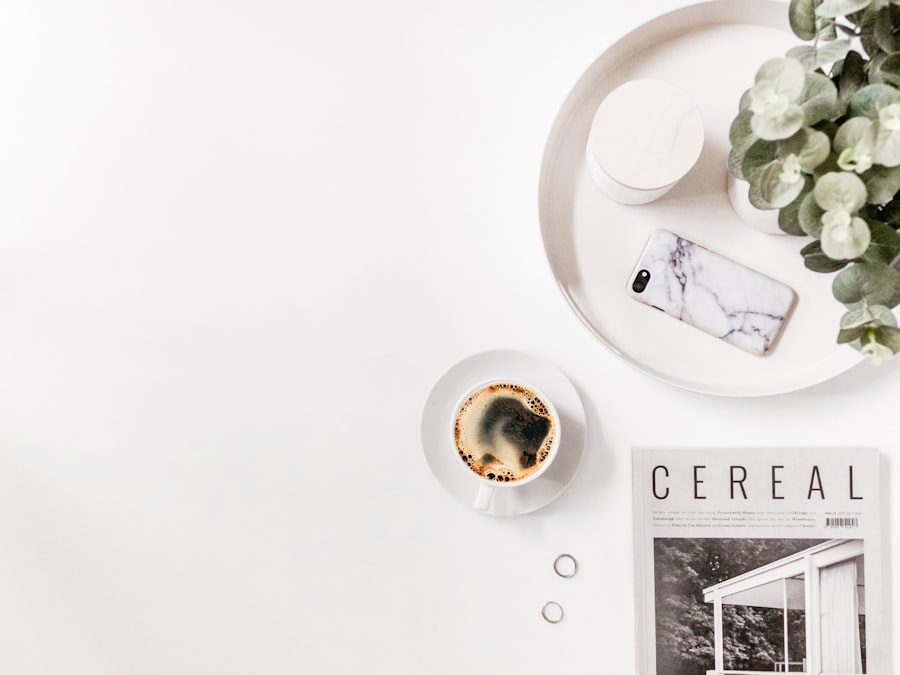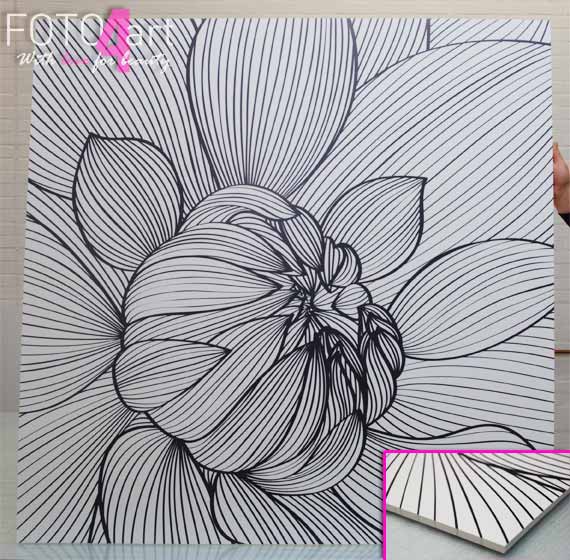Minimalist design has become increasingly popular in modern interiors. This design style focuses on simplicity, functionality, and clean lines. It is characterized by a minimal use of decoration and a focus on the essentials. In this article, we will explore what minimalist design is, its history, its advantages, and how it can be incorporated into different areas of the home.
What is minimalist design?
Minimalist design is a design style that emphasizes simplicity and functionality. It is characterized by clean lines, a minimal use of decoration, and a focus on the essentials. The goal of minimalist design is to create a space that is visually appealing, uncluttered, and calming.
One of the key characteristics of minimalist design is the use of neutral colors such as white, black, and gray. These colors create a sense of calm and allow the focus to be on the form and function of the space. Another characteristic of minimalist design is the use of simple and clean lines. Furniture and accessories are often sleek and streamlined, with no unnecessary embellishments.
The history of minimalist design
The origins of minimalist design can be traced back to the early 20th century. It was influenced by movements such as Bauhaus and De Stijl, which emphasized simplicity and functionality in design. Key figures in minimalist design include architects such as Ludwig Mies van der Rohe and Le Corbusier, who believed in the principle that “less is more.”
In the 1960s, minimalist design gained popularity with the rise of the Minimalist art movement. Artists such as Donald Judd and Dan Flavin created works that were characterized by their simplicity and lack of ornamentation. This minimalist aesthetic soon spread to other areas of design, including interior design.
Minimalist design in modern interiors
Minimalist design can be seen in many contemporary homes today. It is often used in open-concept spaces where the focus is on creating a clean and uncluttered environment. In these spaces, furniture and accessories are kept to a minimum, and the emphasis is on functionality and simplicity.
One example of minimalist design in modern interiors is the use of open shelving in the kitchen. Instead of traditional upper cabinets, open shelves are used to display dishes and cookware. This not only creates a sense of openness but also allows for easy access to items.
Another example is the use of minimalistic furniture in the living room. Instead of bulky sofas and chairs, minimalist design favors sleek and streamlined pieces. This creates a sense of spaciousness and allows for easy movement within the space.
The advantages of minimalist design
There are several advantages to incorporating minimalist design in modern interiors.
Increased functionality and efficiency: By focusing on the essentials and eliminating unnecessary clutter, minimalist design allows for increased functionality and efficiency. Everything in the space has a purpose and serves a specific function.
Reduced clutter and stress: Minimalist design promotes a sense of calm and tranquility by reducing clutter and visual distractions. A clutter-free space can help reduce stress and create a more peaceful environment.
Enhanced aesthetic appeal: Minimalist design is visually appealing due to its clean lines and simplicity. It creates a sense of order and harmony, making the space feel more inviting and relaxing.
Minimalist color schemes and materials

Minimalist design often uses neutral color schemes such as white, black, and gray. These colors create a sense of calm and allow the focus to be on the form and function of the space. However, pops of color can also be incorporated through accessories or artwork to add visual interest.
In terms of materials, minimalist design favors natural materials such as wood, stone, and metal. These materials add warmth and texture to the space while maintaining a clean and simple aesthetic.
Minimalist furniture and accessories
Minimalist furniture is characterized by its sleek and streamlined design. It often features clean lines and minimal embellishments. Common materials used in minimalist furniture include wood, metal, and glass.
Minimalist accessories are also simple and uncluttered. They are often used sparingly to create visual interest without overwhelming the space. Examples of minimalist accessories include simple vases, artwork, and lighting fixtures.
Minimalist design in the kitchen and bathroom
In the kitchen, minimalist design can be achieved by keeping countertops clear of clutter and using open shelving instead of upper cabinets. Simple and sleek appliances can also contribute to a minimalist aesthetic.
In the bathroom, minimalist design can be achieved by using clean lines and minimal decoration. Floating vanities and wall-mounted faucets can create a sense of openness, while simple and uncluttered storage solutions can help keep the space organized.
Minimalist design in the bedroom
In the bedroom, minimalist design can create a calm and relaxing environment. To achieve this, it is important to keep the space uncluttered and free of unnecessary furniture or accessories. Simple and sleek furniture pieces, such as a platform bed or a minimalist dresser, can contribute to a minimalist aesthetic.
Minimalist design in the living room
In the living room, minimalist design can create a sense of spaciousness and openness. To achieve this, it is important to keep furniture to a minimum and choose pieces that are sleek and streamlined. A neutral color palette can also contribute to a minimalist aesthetic.
Tips for creating a minimalist interior
To create a minimalist interior, it is important to declutter and organize your space. Get rid of any items that are not essential or do not bring you joy. Keep surfaces clear of unnecessary clutter and find storage solutions that are simple and unobtrusive.
When choosing furniture and accessories, opt for pieces that are sleek and streamlined. Avoid excessive decoration or embellishments. Incorporate natural elements, such as plants or natural materials, to add warmth and texture to the space.
In conclusion, minimalist design is a popular design style in modern interiors. It emphasizes simplicity, functionality, and clean lines. By incorporating minimalist design principles, you can create a space that is visually appealing, uncluttered, and calming. Whether you choose to incorporate minimalist design in your kitchen, bathroom, bedroom, or living room, the benefits of this design style are numerous. So why not give it a try and create a minimalist interior that suits your personal style and preferences?
Bij het creëren van een minimalistisch interieur is het belangrijk om ruimte en rust te behouden. Een gerelateerd artikel dat hierbij kan helpen, is “Richt je kleine eetkamer slim en effectief in met deze tips“. In dit artikel worden handige tips gegeven om een kleine eetkamer op een slimme en effectieve manier in te richten. Door gebruik te maken van slimme opbergoplossingen en het kiezen van de juiste meubels, kun je optimaal gebruik maken van de beschikbare ruimte en tegelijkertijd een rustige en minimalistische uitstraling behouden. Lees het volledige artikel hier.
FAQs
Wat is minimalistisch design?
Minimalistisch design is een ontwerpstijl die zich richt op het gebruik van minimale elementen en eenvoudige vormen om een gevoel van ruimte en rust te creëren. Het minimalisme is ontstaan als reactie op de overdaad aan decoratie en ornamenten in de vorige eeuw.
Hoe kan minimalistisch design worden toegepast in moderne interieurs?
Minimalistisch design kan worden toegepast in moderne interieurs door het gebruik van eenvoudige vormen, neutrale kleuren en het verminderen van overbodige decoratie. Het gebruik van natuurlijke materialen zoals hout en steen kan ook bijdragen aan een minimalistische uitstraling.
Wat zijn de voordelen van minimalistisch design?
Minimalistisch design kan bijdragen aan een gevoel van rust en ruimte in een interieur. Het kan ook helpen om de focus te leggen op de essentiële elementen van een ruimte en de aandacht af te leiden van overbodige decoratie. Bovendien kan minimalistisch design bijdragen aan een gevoel van duurzaamheid, omdat het gebruik van minder materialen en decoratie kan leiden tot minder afval en een kleinere ecologische voetafdruk.
Is minimalistisch design geschikt voor alle interieurs?
Minimalistisch design kan geschikt zijn voor alle interieurs, maar het is vooral geschikt voor moderne interieurs die gericht zijn op eenvoud en functionaliteit. Het kan minder geschikt zijn voor traditionele interieurs die gericht zijn op decoratie en ornamenten.
Hoe kan ik mijn interieur minimalistischer maken?
Om uw interieur minimalistischer te maken, kunt u beginnen met het verminderen van overbodige decoratie en het gebruik van eenvoudige vormen en neutrale kleuren. Het gebruik van natuurlijke materialen zoals hout en steen kan ook bijdragen aan een minimalistische uitstraling. Het is ook belangrijk om te focussen op functionaliteit en de essentiële elementen van een ruimte.

